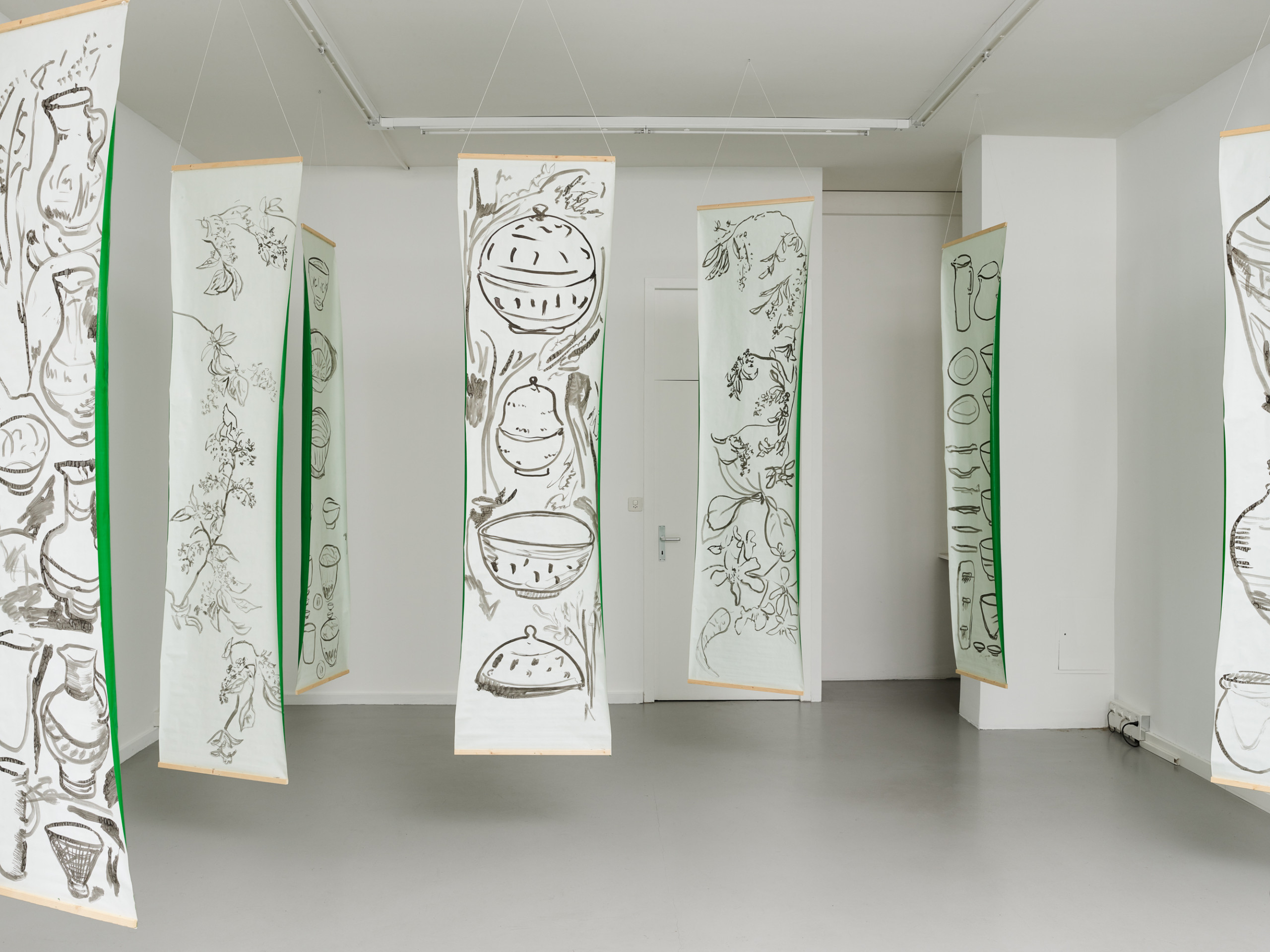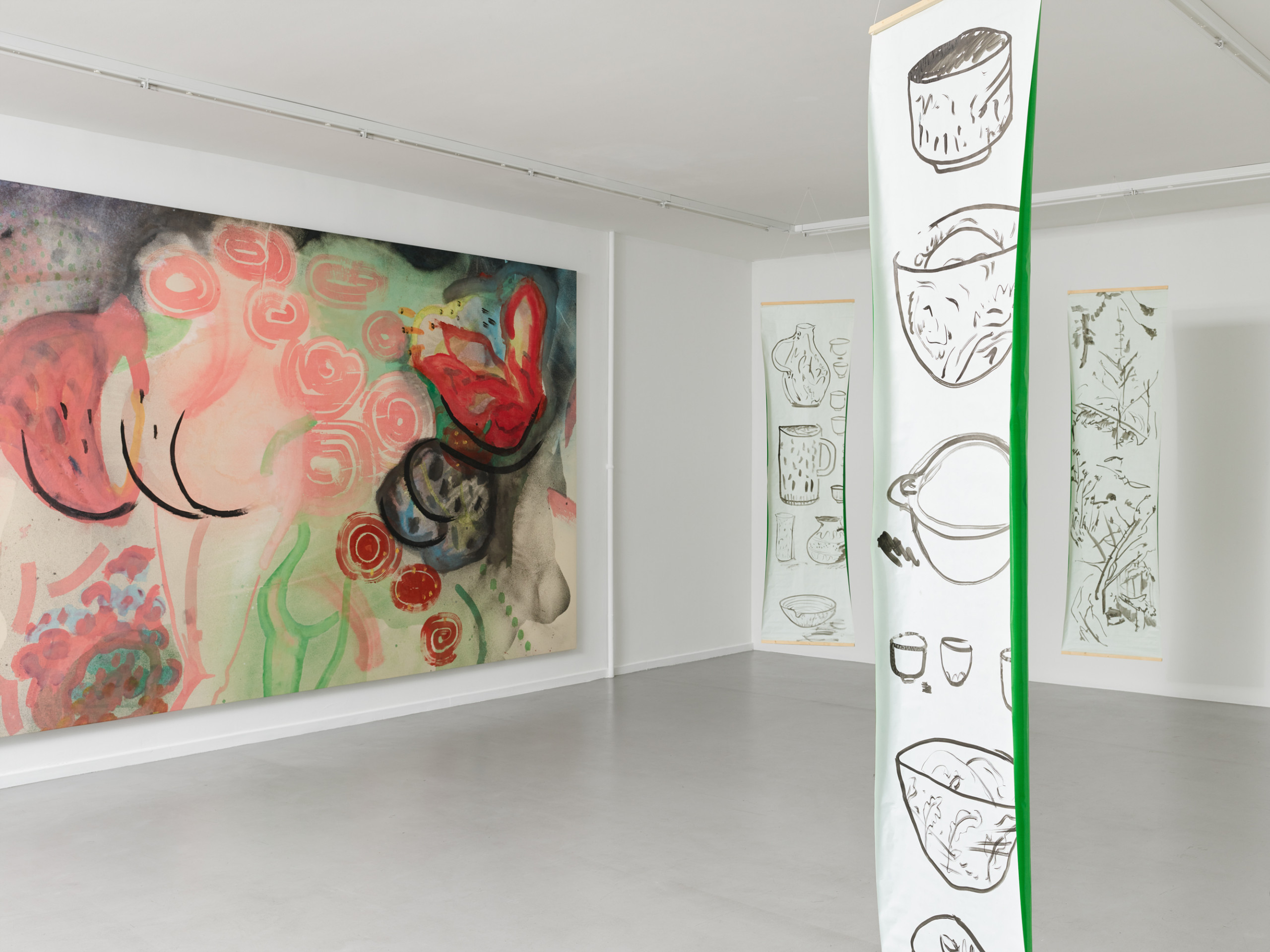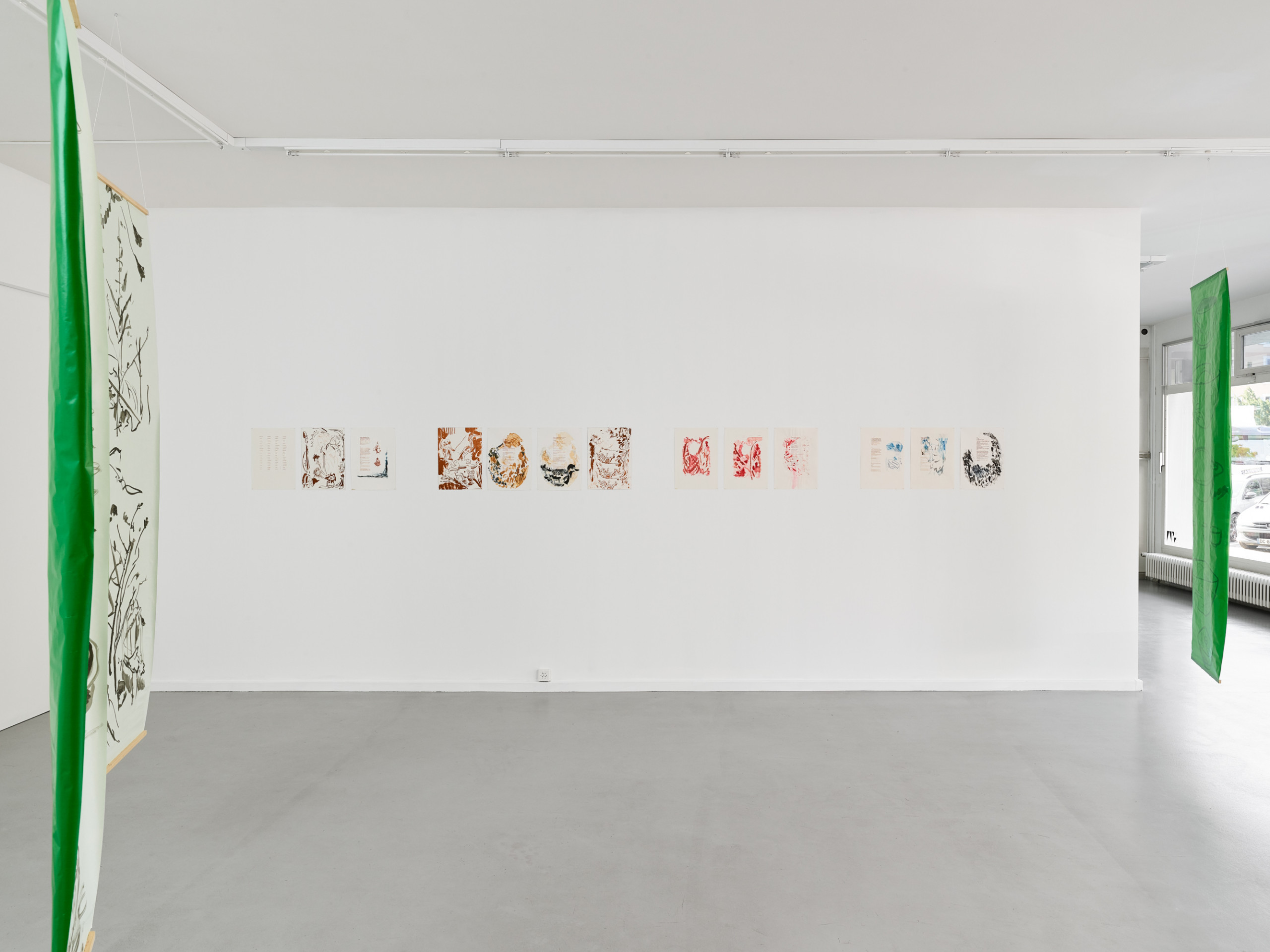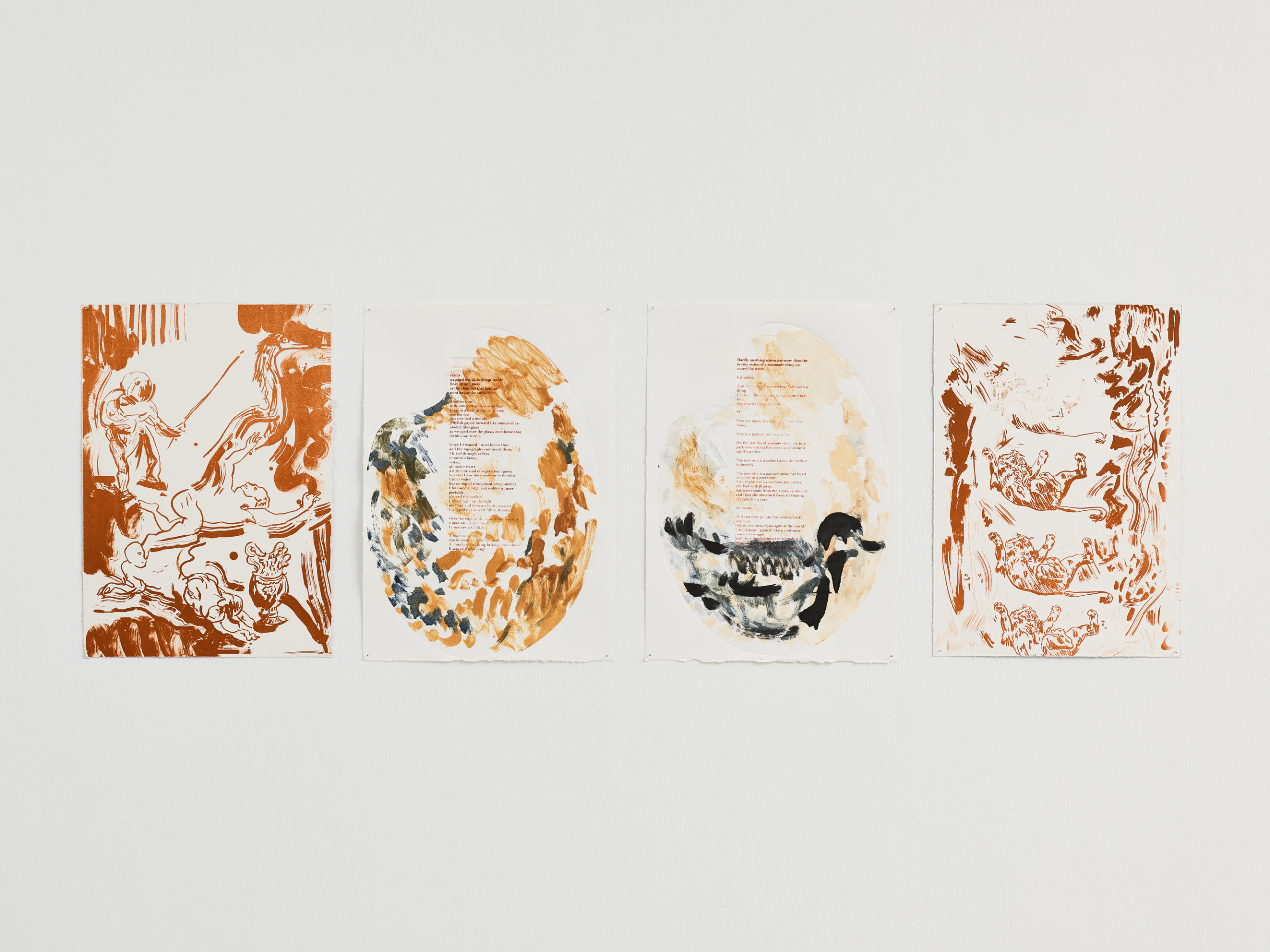Centre d’édition Contemporaine
Geneva
Matthew Lutz-Kinoy
The Meadow
Oct 12, 2018
Feb 08, 2019

Matthew Lutz-Kinoy’s primary medium might be painting, but it often goes beyond two-dimensional space to extend to its surroundings, becoming decor or pieces of furniture. This expansion of the pictorial space is seen both in the choice of subjects and in the enlarged and repeated stylized motifs. His large format paintings, often installed like decorative tapestries, wall panels or suspended ceilings, stages the exhibition space in which viewers are physically immersed. This highly spatial and physical approach to painting expresses Lutz-Kinoy’s special relationship with the body and gesture, and explains the extension of his work into dance and performance. For his recent exhibition at Le Consortium, Dijon, a vast system of murals, inspired by François Boucher’s painted panels that once decorated a boudoir and are now displayed at the Frick Collection in New York, entirely covered the walls of this white cube. This fascination with the refined, sophisticated and carnal painting of the 18th century brought out its erotic and transgressive nature against a backdrop of sensual and sexual liberation.
While the lightness of Lutz-Kinoy’s works flirts with the decorative and moves away from a strong notion of style and “touch”, there is more of a connection to traditions marked by stylistic rules and a pre-established vocabulary: calligraphy, theatre, Japanese ceramics, the Rococo, and the stylized motifs of François Boucher, Jean Cocteau or Balthus. These versions, practically fallen into the public domain through their frivolous accessibility, have transferred them to a desacralized and democratized space, where taste and its modernity can convey signs of emancipation, connecting in some way with Lutz-Kinoy’s art, in a fusion of gestural fluidity and thematic freedom. What’s also happening here is a de-hierarchization of references and techniques, mixing acrylic painting, screen printing, dyeing and stenciling, or producing artisanal pieces that reconnect with the handmade and everyday objects: ceramics or printed fabrics. In this same movement, the artist boldly includes floral motifs, loose naked bodies, elongated curves, plants or animals in close-up. This uninhibited fluidity, his free associations, his multiple interconnections in a decompartmentalized creative space express the influence of sampling practices, and perhaps, more widely, a holistic vision of the world around him.


Matthew Lutz-Kinoy entwines sensual bodies with loose, recurrent decorative motifs inspired by vegetation, noodle style, Art Nouveau. This pictorial and calligraphic treatment is the inspiration for the entire exhibition The Meadow at the CEC and in particular for the ongoing project to produce an edition of lithographs, to be presented early December. For this project, the artist’s reference points are books illustrated by Pablo Picasso, Max Ernst and Francis Picabia, who combined texts and drawings without hierarchy. Lutz-Kinoy’s motifs do not directly illustrate the texts, but compose graphic and poetic interplays that frame, conceal, partially erase or even stain them. The text is deconstructed as signs forming abstract plates on which text and drawing merge into one another, more rhythmic and sonorous than illustrative.
For his edition, Scrolls in the Wind, Matthew Lutz-Kinoy has invited Harry Burke, Cyrus Grace Dunham, Sharon Hayes, James English Leary, Sophy Naess, Amy Sillman and Emily Sundblad, friends who are writers, critics or artists, to propose texts or poems, forming a duo with them inspired by this same progressive spirit that often extends beyond the context of art. This friendly, intellectual, political and artistic community examines new forms of tolerance, commitment and protest. It aims to break with established codes and the traditional boundaries between the arts, social, political and gender categories. Free of any hierarchy or exclusion, but instead inclusive and tolerant, the project favors fluidity between forms of artistic expression and evolves toward an openness to multiple identities; transgender, LGBTQA+ and non-binary.





The Meadow, 2013
Acrylic and charcoal on canvas
108h x 273.60w in
274.32h x 694.94w cm